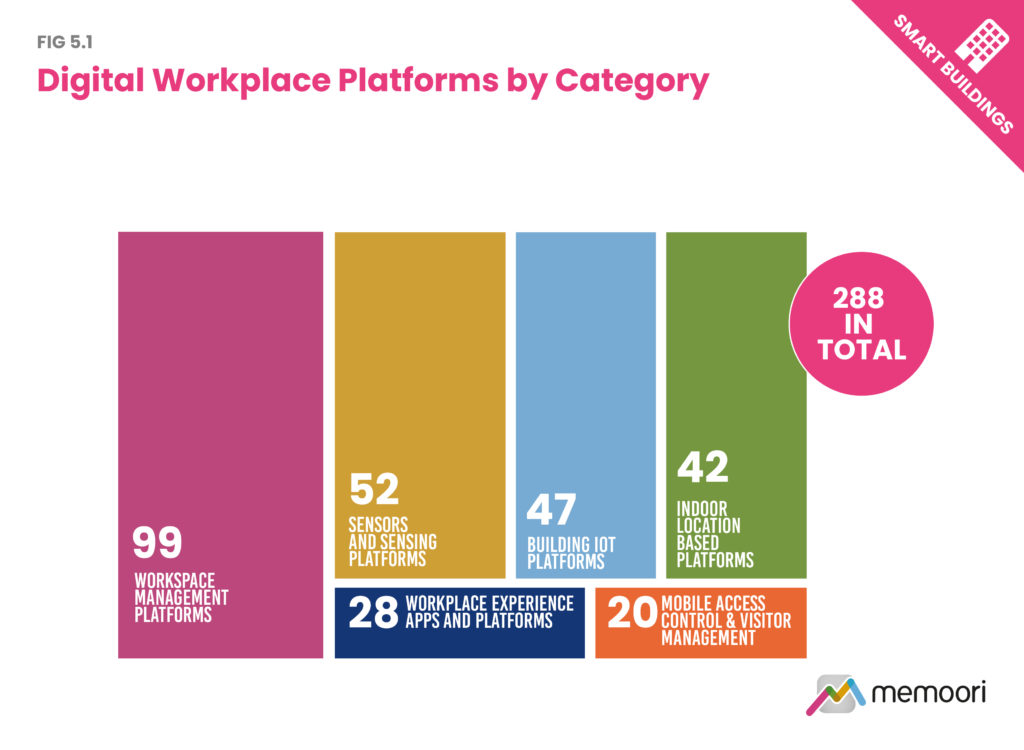Our new research forecasts that the digital workplace market will grow rapidly at 20% per year between 2021 and 2026, rising from $3.70 billion in 2021, to $9.21 billion in just five years. Market growth will be largely driven by cost-control measures such as space rationalization and reconfigured solutions to help create safe and hybrid workspaces for the pandemic era. There will be a renewed emphasis on healthy buildings as a tool to mitigate virus transmission, make returning workers more comfortable, and attract increasingly health conscious talent in this ‘new normal’ for global workplaces.
However, a range of factors related to the impact and response to the pandemic, work culture and socio-economic trends, as well as the strength and adaptability of local markets means that significant regional differences are now emerging in the new evolution of the workplace. While an increasingly technology-based user experience in commercial offices is becoming the norm around the world, each major market is creating its own unique new set of working styles. Most market developments revolve around remote, hybrid, and flexible working, but how each market manages the new landscape’s drivers and barriers is now a key determining factor its growth and success.
“The main drivers for growth in the global digital workplace sector are diverse, ranging from the recent move to hybrid working models and flexible offices; the overall employee experience market and the increased focus on occupant-centric workplaces. Also the renewed emphasis on healthy buildings, which are perceived by many occupants as a necessity to ensure their health and safety,” states our new report.
The major barriers to growth include the disconnect between landlords and commercial occupiers, high implementation costs and the capability to demonstrate Return on Investment for use cases that may be intangible or hard to demonstrate. Significant implications in terms of consent and personal data privacy as well as market confusion over the variety of technologies, vendors, and solutions available can also hold markets back.

The European workplace market clearly shows higher market acceptance of flexible and hybrid working solutions, with a much higher level of completed deployments in the public domain, representing as much as 56% of available global case studies. A recent executive survey by Locatee demonstrated Europe’s continued workplace evolution, with 74% of European firms already utilizing a progressive flexible workspace strategy, compared to 60% in the US, and 90% of European firms implementing flexible seating “hotdesking”, compared to just 38% in the US.
The North American market, dominated by the US, may not currently be as large as in the EMEA region but our analysis predicts that the region will ultimately outpace the EMEA market around 2025 or 2026. Before the COVID-19 pandemic, the US workforce spent just 5% of their total working time remote from the office. By the spring of 2020, that figure had risen to 60% and remained at a similar level well into 2021 according to a special report by The Economist. However, less severe lockdown policies and more freedom for employers may have played a part in reducing pandemic-related digital workplace market drivers relative to the EU.
Inevitable growth in the North American market will be boosted by the presence of a significant number of suppliers encouraging innovation and the development of competitive solutions, as we see with the wider IoT sector. The North American market has also experienced significant consolidation and investment activity around workplace apps. Our analysis indicates that the region currently accounts for 25% of completed deployments in commercial office space, but a 20.7% CAGR will be enough to allow the region to take center stage for overall market size in the medium-term.
The Asian market presents the greatest potential, and our research suggests it will experience the fastest growth of any region in the world with a CAGR of 24.4% over the forecast period. The analysis indicates that the Asia Pacific region alone accounts for as much as 19% of total completed digital workplace deployments in commercial office space globally. The vast majority of that activity taking place in China, but Hong Kong, India, Singapore, and Japan also play significant roles in Asia’s growing regional market.
Much of Asia’s digital workplace market growth is driven by the region’s strong construction sector, which accounts for around 60% of all construction around the world. Cushman & Wakefield’s Asia Pacific Real Estate Outlook 2022 stated that the Asia Pacific office market has shown remarkable resilience since the onset of the pandemic. Asian demand is forecast to increase further to 74 million square feet (msf) reflective of a stronger recovery across the entire region, before returning to pre-pandemic levels of around 83msf in 2023.
“The market drivers and market lifecycles for digital workplace solutions vary significantly from region to region. The market is still in a relatively early stage in all geographic areas but can be considered at its most mature in the Europe and Middle Eastern region, where both homegrown startups and large international players are actively developing and marketing solutions in the region,” the report states. “As the digital workplace takes shape in businesses worldwide with a revised set of working styles, whether it be remote working, hybrid working or flexible working, this change will necessitate an enhanced toolset enabling data-driven decision-making about the use of commercial office space.”



